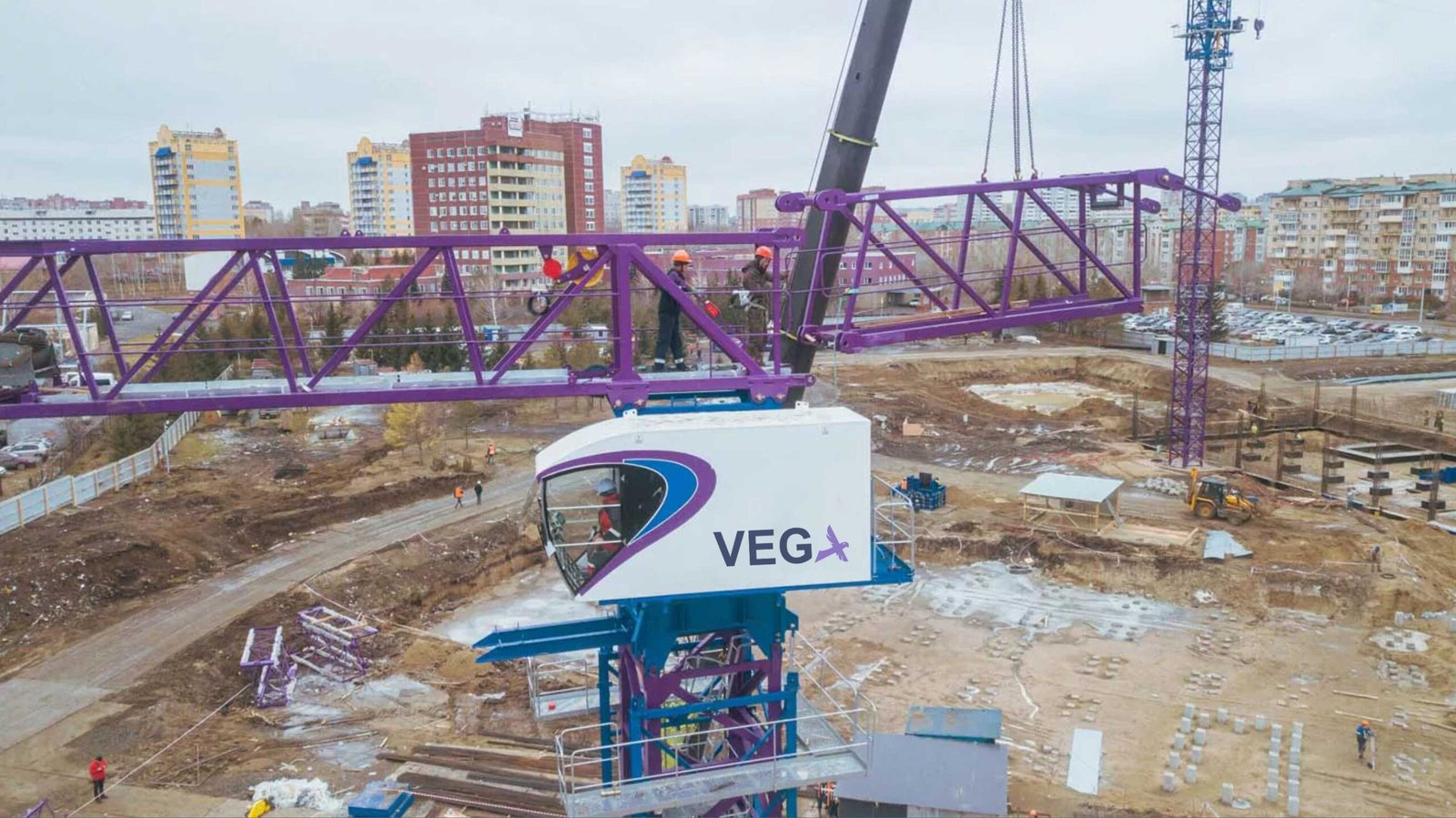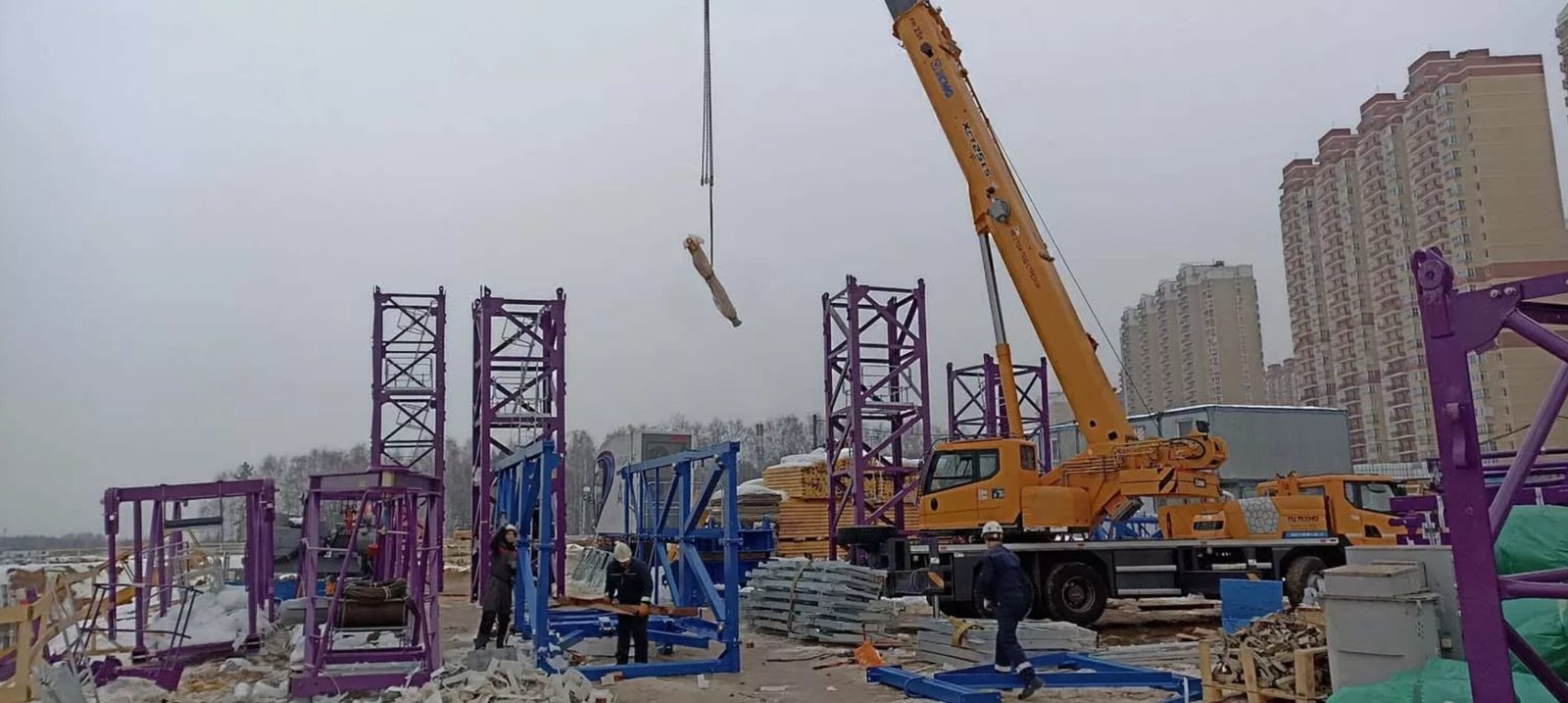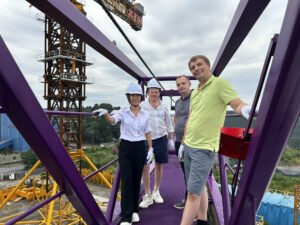
Tower cranes are essential for the construction of large buildings and infrastructure projects. Their ability to lift heavy materials to great heights makes them a key piece of equipment on tall construction sites. But how exactly do these towering giants get set up in the first place? In this article, we will explore the process of installing a tower crane, how crane operators access the crane, and how these cranes stand firm during construction.
Tower cranes are erected using a process called climbing. They are assembled piece by piece, and their height increases as the building rises. Operators access cranes using lifts or climbing.
Let’s take a closer look at how tower cranes are installed and how they remain stable throughout the construction process.
How do tower cranes get put up?

The installation of a tower crane is a carefully planned and executed process. It involves several steps, including assembly, securing the base, and then gradually increasing the crane's height as the building progresses. Here’s a breakdown of how tower cranes are typically put up on construction sites:
- Base Setup: The first step is to lay a solid foundation for the crane. This involves pouring a large concrete base that will support the crane’s weight. This foundation must be strong enough to bear the crane’s load and the materials it will be lifting. Concrete foundation1
- Assembling the Crane: Once the base is prepared, the crane’s main structure, which includes the mast and slewing unit, is assembled on the ground. This includes attaching the tower section and the turntable (the base that allows the crane to rotate 360 degrees). The mast is built piece by piece, each section being lifted into place by a smaller crane. Mast, Slewing unit2
- Climbing the Crane: Tower cranes are designed to "climb" as the building gets taller. Using a process called climbing, a smaller crane (or another tower crane) will lift the sections of the tower into place. The crane’s hoist system is then used to "raise" the entire crane structure. Climbing process3
- Mounting the Boom and Counterweights: Once the tower is fully assembled and in place, the boom (the arm of the crane) is attached. The counterweights, which help stabilize the crane, are also added. These weights ensure the crane does not tip over while lifting heavy materials. Boom4
- Final Checks: After the crane is fully assembled, operators will conduct safety checks to ensure all parts are secure, and the crane is capable of performing its tasks safely.
The Installation Process at a Glance
| Step | Description |
|---|---|
| Base Setup | A solid concrete foundation is laid for stability |
| Assembling the Crane | The crane mast and turntable are assembled piece by piece |
| Climbing the Crane | Sections are added as the crane "climbs" to match building height |
| Mounting Boom/Counterweights | The boom and counterweights are installed for lifting capacity |
| Final Checks | Safety inspections to ensure everything is secure |
How do crane operators get up and down?
<img src="https://vega-crane.com/wp-content/uploads/2025/03/maintaence.jpg "Climbing crane, safety />
Crane operators play a critical role in guiding the crane during construction. To operate the crane, they need to access it, often from great heights. But how do they get up and down the crane? Here’s how they typically access their working stations:
- Climbing the Crane: For many tower cranes, operators climb a set of stairs or ladders that are built into the crane’s structure. These can be quite long, especially for taller cranes. It’s a physically demanding task, as operators must ascend or descend the crane while carrying necessary tools and equipment.
- Crane Lifts: Larger tower cranes sometimes have a crane lift built into the structure. This is a small elevator-like platform that can carry operators and maintenance workers up and down the crane safely. The lift is powered by the crane’s motor and is typically located inside the tower section.
- Accessing the Cab: The operator’s cab is typically located at the top of the crane’s tower or along the boom. Once operators reach the top, they enter the cab to take control of the crane. The cab contains all the controls needed for crane operation, including levers for lifting, rotating, and moving the crane’s arm.
- Safety Protocols: Tower crane operators are required to follow strict safety protocols. This includes wearing safety harnesses, securing themselves while climbing, and ensuring that the crane is locked in place before moving. Safety protocols5
Access Methods for Crane Operators
| Method | Description |
|---|---|
| Climbing | Operators use ladders or stairs built into the crane |
| Crane Lift | Some cranes have a lift to take operators up and down |
| Accessing the Cab | The cab is reached at the top of the crane's structure |
| Safety Protocols | Operators follow safety measures to prevent accidents |
How are tower cranes installed and removed in large construction project sites?

Installing and removing tower cranes at large construction sites is a complex process that requires careful planning and coordination. The process differs for the initial installation and the eventual removal of the crane once the project is complete.
Installation of Tower Cranes
The installation process, as mentioned earlier, begins with a solid foundation. Once the base is in place, the crane structure is assembled gradually, with each piece lifted into place using a smaller crane. As the building rises, the tower crane’s height is increased using its own climbing mechanism.
In some cases, the crane might need to be dismantled and moved to another location on the site as the building progresses. A process called climbing allows the crane to be “extended” to the desired height as the building grows taller. The installation requires strict safety measures to ensure that workers and surrounding structures are not at risk.
Removal of Tower Cranes
When the construction is finished and the tower crane is no longer needed, the removal process begins. This process is generally carried out in the opposite order of installation:
- Dismantling the Boom: The boom is removed first, often with the help of another crane.
- Lowering the Tower Sections: Once the boom is removed, the sections of the tower are taken down, one by one, using the crane’s hoisting system.
- Removing the Base: Finally, the concrete base is removed after the crane has been fully dismantled.
- Transporting the Parts: All parts of the crane are then transported off-site for reuse or storage.
Installation and Removal Process Overview
| Task | Description |
|---|---|
| Installation | The crane is built piece by piece, climbing as the building rises |
| Dismantling | The boom and tower sections are carefully taken apart |
| Removing the Base | The concrete base is removed after crane dismantling |
| Transporting the Parts | The crane parts are packed and transported off-site |
How do they stand up cranes?

Tower cranes are designed to stand tall and remain stable even when they are lifting very heavy materials. But how do they stay upright?
- Concrete Foundation: The crane’s base is bolted into a reinforced concrete foundation that ensures it won’t tip over. The base must be large and strong enough to support the crane’s weight and the materials it lifts.
- Counterweights: To balance the weight of the materials being lifted, counterweights are added to the crane. These heavy weights are placed on the back of the crane to keep it from tipping forward as it lifts large loads. Counterweights6
- Structural Design: Tower cranes have a triangular or lattice structure that provides strength and stability. This allows the crane to stand upright without swaying too much, even in windy conditions.
- Rigging and Safety Measures: Tower cranes are carefully rigged to ensure that all parts are securely fastened. Safety measures such as wind speed monitoring are also in place to ensure that the crane doesn’t operate in dangerous conditions.
Crane Stability Factors
| Factor | Description |
|---|---|
| Concrete Foundation | The crane is bolted into a strong, reinforced base |
| Counterweights | These balance the crane and prevent tipping |
| Structural Design | The crane’s design allows for strength and stability |
| Safety Measures | Wind monitoring and secure rigging ensure stability |
Conclusion
Putting up a tower crane is a complex process that involves careful planning, assembly, and safety measures. From laying the foundation to gradually increasing the crane’s height, every step is crucial to ensuring the crane is safe and functional. Once the crane is operational, operators can access it using ladders or lifts, and the crane remains stable thanks to its design and counterweights. When construction is complete, the crane is carefully dismantled and removed from the site, making way for the next stage of the project.
- Learn why a strong concrete foundation is essential for tower cranes' stability. ↩
- Find out how the slewing unit enables the crane to rotate. ↩
- Explore the process by which tower cranes extend in height. ↩
- Understand the role of the boom in lifting materials. ↩
- Understand the essential safety measures for crane operators. ↩
- Learn how counterweights prevent tower cranes from tipping. ↩



